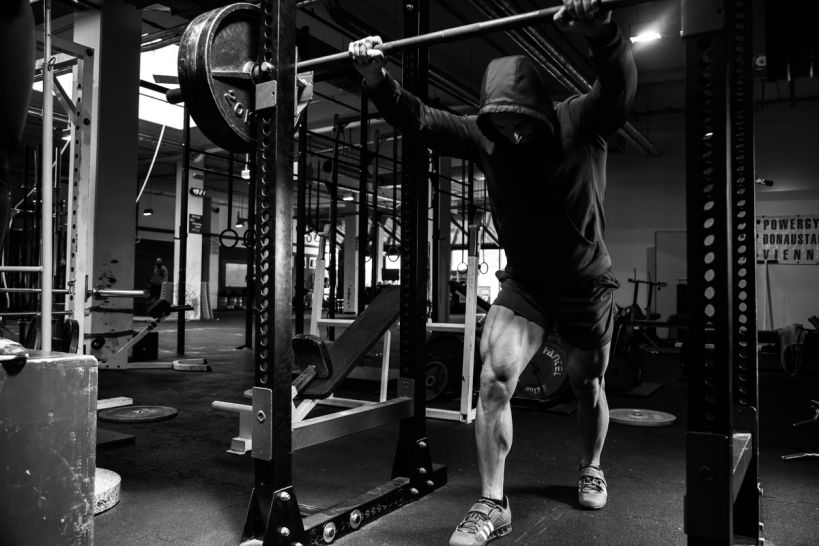Bike vs Treadmill
Introduction
Biking and treadmill workouts are two of the most popular forms of exercise in today's fitness landscape. With their accessibility and effectiveness, these activities have become go-to choices for individuals seeking to improve their physical fitness. While both biking and treadmill workouts offer numerous benefits, they also come with their own set of pros and cons. This article aims to delve into the intricacies of biking and treadmill workouts, exploring the advantages and disadvantages associated with each. By providing a comprehensive analysis, this article seeks to assist readers in making an informed decision about which workout option best suits their individual needs.
Brief Overview of the Popularity of Biking and Treadmill Workouts
When it comes to indoor cardio exercises, treadmills have long been a staple in gyms worldwide. These versatile machines allow users to walk, jog, or run without even stepping outside. Whether you're battling unpredictable weather or prefer the controlled environment offered by a gym setting, treadmills provide a reliable option for cardiovascular training. Biking, on the other hand, has gained immense popularity due to its versatility and accessibility. From stationary bikes found in gyms to outdoor cycling adventures that let you explore scenic landscapes while getting fit - biking offers an array of options for people looking to improve their cardiovascular health. Both biking and treadmill workouts provide excellent opportunities for individuals seeking weight loss or improved cardiovascular fitness. Additionally, these activities can be personalized based on individual preferences such as intensity levels or specific training goals.
Thesis Statement: Exploring the Pros and Cons of Biking and Treadmill Workouts
The primary objective of this article is to examine both biking and treadmill workouts comprehensively. By analyzing the pros and cons associated with each form of exercise, we aim to equip readers with valuable insights that will aid them in making informed decisions about their fitness routines. Throughout the following sections, we will delve into the benefits offered by biking and treadmill workouts individually. We will explore factors such as cardiovascular health improvement, joint impact, muscle engagement, and other aspects that differentiate these exercise methods. By highlighting both the advantages and disadvantages of each option, we hope to enable readers to make well-balanced decisions based on their fitness goals, preferences, and any physical limitations they may have. It is crucial to approach exercise with an open mind and a willingness to adapt. By understanding the various aspects of biking and treadmill workouts, readers will be empowered to choose the activity that best aligns with their unique circumstances. So without further ado, let us dive into this comprehensive exploration of bike vs. treadmill workouts!
Benefits of Biking
Cardiovascular health improvement through aerobic exercise
Biking is an exceptional form of aerobic exercise that can significantly boost your cardiovascular health. When you pedal away on a bike, your heart rate increases, pumping more oxygenated blood to your muscles. This enhanced blood flow aids in the delivery of vital nutrients and oxygen to all parts of your body, including your heart. Regular biking sessions can improve your overall endurance and stamina, making everyday activities feel less demanding.
Increased heart rate and oxygen delivery to muscles
One of the key benefits of biking is its ability to elevate your heart rate and enhance oxygen delivery to your muscles. As you pedal faster and push yourself harder during a bike ride, your heart works harder too, pumping blood at a faster rate. This increased blood flow carries more oxygen to the working muscles, allowing them to function optimally. By regularly engaging in biking workouts, you can improve the efficiency of this process over time.
Lower risk of heart disease, stroke, and high blood pressure
Biking regularly offers a range of long-term benefits for cardiovascular health. Studies have shown that individuals who incorporate biking into their fitness routines have a reduced risk of developing heart disease or suffering from strokes. This low-impact aerobic exercise helps lower blood pressure levels by improving circulation and reducing arterial stiffness. By committing to regular bike rides, you can strengthen your cardiovascular system and decrease the likelihood of encountering these serious health issues.
Low-impact workout with reduced strain on joints
Unlike running on a treadmill or engaging in high-impact activities like jogging or jumping rope, biking provides a low-impact workout that places minimal stress on your joints. With each revolution of the pedals, the smooth circular motion allows for an even distribution of forces throughout the body. This makes it an excellent option for individuals with joint issues or injuries, as it reduces the risk of aggravating existing conditions.
Suitable for individuals with joint issues or injuries
Biking is often recommended by healthcare professionals as a suitable exercise for individuals dealing with joint problems or recovering from injuries. The cyclic nature of pedaling ensures that the movements are controlled and gentle, minimizing strain on vulnerable areas. It allows you to engage in aerobic exercise without exacerbating any pain or discomfort in your joints. By opting for biking sessions, you can still enjoy the benefits of physical activity while taking care of your body's needs.
Less stress on knees, hips, and ankles compared to running on a treadmill
When comparing biking to running on a treadmill, one notable advantage is the reduced stress it places on key weight-bearing joints such as knees, hips, and ankles. Running involves repetitive impact forces that can lead to wear and tear over time. In contrast, biking provides the opportunity to engage in a cardiovascular workout with significantly less strain on these vulnerable areas. This makes it an appealing choice for those seeking a lower-impact alternative that minimizes the risk of developing chronic joint pain or inflammation. Biking offers numerous benefits that contribute to overall health and well-being. It is an effective way to improve cardiovascular health through aerobic exercise while increasing heart rate and oxygen delivery to muscles. Regular bike rides have been linked to lower risks of heart disease, stroke, and high blood pressure. Additionally, biking provides a low-impact workout that reduces strain on joints compared to running on a treadmill. This makes it an ideal choice for individuals with joint issues or injuries who still want to engage in physical activity without compromising their musculoskeletal health. With all these advantages in mind, incorporating biking into your fitness routine can be an excellent decision towards achieving optimal health and enjoying the great outdoors at the same time!
Advantages of Treadmill Workouts
Versatility in Training Options
When it comes to versatility, the treadmill takes the podium. It offers a wide array of training options that can cater to your specific fitness goals. One of its most notable features is the ability to adjust incline settings, allowing you to simulate outdoor terrain like hills and slopes. Whether you're training for a challenging trail run or preparing for a marathon with hilly sections, the treadmill has got your back. Not only does this mimic real-world conditions, but it also engages different muscle groups and intensifies your workout. In addition to adjusting incline settings, treadmills also provide varied speed options. This flexibility makes them ideal for both interval training and steady-state cardio. You can push yourself with intense bursts of high-speed sprints followed by recovery periods at slower paces. For those who prefer longer endurance sessions, simply set a consistent speed that matches your desired intensity level and go the distance! With such customizable options at your fingertips, boredom is but an afterthought during treadmill workouts.
Weight-Bearing Exercise Promoting Bone Density
Contrary to biking, which is a non-weight-bearing exercise, treadmill workouts offer substantial benefits when it comes to bone health. By placing weight on your legs while running or walking on a treadmill, you engage in weight-bearing exercise that promotes bone density. This becomes particularly important as we age since decreased bone density can lead to osteoporosis and an increased risk of fractures. The repetitive impact on bones while using a treadmill stimulates bone remodeling, making them stronger over time. Not only does this help mitigate osteoporosis risks but it also strengthens lower body muscles such as calves, quads, and glutes—a bonus aesthetic perk if you ask me! So hop on that treadmill and give those leg muscles some love while ensuring strong bones for a healthier future.
Subtitle: The Perfect Balance for Your Lower Body
If you're aiming to sculpt and tone your lower body, the treadmill is here to assist. Running or walking on a treadmill predominantly targets the muscles in your calves, quads, and glutes. With each stride, these muscles work in unison to propel you forward, creating an excellent opportunity for strength development. As your foot pushes off the treadmill's belt, your calf muscles contract, providing the necessary power. Meanwhile, your quadriceps engage to extend and straighten the knee joint while stabilizing your upper body. And let's not forget about those glutes! They activate during each stride to maintain stability and provide additional force during push-off. So if strong legs and a firm booty are part of your fitness aspirations, incorporating regular treadmill workouts should certainly be on your radar. Treadmills offer a multitude of advantages that make them a top choice for many fitness enthusiasts. Their versatility allows you to simulate outdoor terrain and customize workout intensity through adjustable incline settings and varied speed options. Moreover, their weight-bearing nature promotes bone density and strengthens lower body muscles like calves, quads, and glutes. So if you're looking for an all-in-one workout machine that can challenge you physically while providing ample training options—look no further than the trusty treadmill!
Drawbacks of Biking
Subtitle: The Neglected Upper Body
When it comes to biking, one of the main drawbacks lies in its limited upper body engagement. While your legs are pedaling away, your arms, shoulders, and core muscles may feel a bit left out. Unlike activities such as rowing or swimming that provide a full-body workout, biking primarily focuses on the lower body. This means that if you solely rely on biking for your fitness routine, you might miss out on building strength and endurance in your upper body.
Subtitle: Imbalances on Wheels
Another potential drawback of relying too heavily on biking for your fitness is the risk of developing muscle imbalances. Since cycling mainly targets the legs and neglects other muscle groups, such as the chest and back or even abdominal muscles, you may find yourself dealing with disparities in strength and tone. It's essential to incorporate other forms of exercise that target these neglected areas to maintain balance throughout your body.
Weather-Dependent Activity
Subtitle: A Slave to Mother Nature
One significant limitation of biking is its dependency on outdoor conditions. Rainy days can dampen your plans (pun intended), leaving you without a reliable workout option. Moreover, extreme weather conditions like scorching heatwaves or freezing temperatures can make it challenging to enjoy a comfortable ride. In such instances, finding alternative ways to stay active indoors becomes necessary.
Subtitle: Overcoming Weather Challenges
Despite being restricted to outdoor conditions, there are ways to overcome weather challenges when it comes to biking. To combat rain or extreme heatwaves, investing in appropriate gear such as waterproof jackets or sweat-wicking clothing can help you brave the elements comfortably. Additionally, planning your rides during milder times of the day or seeking sheltered routes can mitigate the impact of unfavorable weather conditions.
Subtitle: Indoor Alternatives
For those who find themselves faced with extreme weather conditions or simply prefer a climate-controlled environment, indoor cycling can be a viable alternative. Spin classes or using stationary bikes at home offer the convenience of working out regardless of the weather outside. While it may lack the scenic beauty of an outdoor ride, indoor cycling allows you to maintain your fitness routine reliably and without worrying about rain, snow, or blistering heat. Whether you choose to embrace biking as your primary fitness activity or not, it's crucial to consider these drawbacks carefully. By understanding its limitations regarding upper body engagement and weather dependence, you can make informed decisions about how to incorporate biking into your overall fitness routine. Remember, balance is key in achieving optimal strength and endurance throughout your entire body.
Disadvantages of Treadmill Workouts
Higher impact on joints compared to biking
When it comes to treadmill workouts, one of the major drawbacks is the higher impact it has on our joints compared to biking. While running or jogging on a treadmill can be an excellent way to burn calories and improve cardiovascular fitness, the repetitive impact can take a toll on our knees, hips, and ankles over time. The constant pounding against the belt can lead to joint pain and discomfort, especially if proper form and cushioned footwear are ignored. It's crucial to listen to your body and be mindful of any signs of strain or injury during treadmill workouts.
Potential strain on knees, hips, and ankles over time
The potential strain on our knees, hips, and ankles is another disadvantage that comes with regular treadmill workouts. The repetitive nature of running or jogging places continuous stress on these weight-bearing joints. Without proper rest periods or cross-training activities that target different muscle groups, overuse injuries become more likely. It's essential to incorporate strength training exercises that focus on building stability in these areas while also giving them adequate time for recovery. Additionally, investing in quality footwear with proper cushioning can help alleviate some of the strain.
Increased risk of boredom
Let's face it; running on a stationary surface like a treadmill isn't exactly thrilling for everyone. Despite its various options for speed variations and incline settings simulating outdoor terrains, monotony can still set in during long sessions. Unlike biking outdoors where you have ever-changing scenery and fresh air invigorating your senses, staring at the same spot or TV screen while jogging in place could lead to decreased motivation and interest over time. To combat this issue, consider incorporating music playlists or podcasts into your workout routine or even trying interval training routines that keep you engaged and focused.
Lack of upper body engagement
Another drawback of treadmill workouts is the limited engagement of your upper body. While running or walking on a treadmill primarily targets your lower body muscles, it neglects the opportunity to strengthen your arms, shoulders, and core. This lack of upper body engagement can result in muscle imbalances over time if you solely rely on treadmill workouts for your overall fitness. To address this issue, consider incorporating separate strength training exercises to target these neglected muscle groups. This way, you can achieve a well-rounded and balanced fitness routine.
Conclusion
While treadmill workouts offer many advantages such as versatility in training options and weight-bearing exercise benefits, there are also several disadvantages to consider. The higher impact on joints compared to biking and the potential strain on knees, hips, and ankles over time are significant drawbacks that must be taken seriously. Additionally, the increased risk of boredom during long sessions and lack of upper body engagement are aspects that may impact workout motivation and overall muscle balance. However, with proper form, appropriate rest periods, cross-training activities, quality footwear cushioning support, and incorporating variety into your routine through music or interval training can help mitigate these drawbacks effectively. So choose wisely based on your goals and preferences while keeping in mind that adopting a diverse approach to fitness is always beneficial in preventing plateaus and maintaining long-term health benefits.
About The Author


Get your macronutrients breakdown
Fill out the form below to get a preview of your recommended daily calorie and macronutrient breakdown.

Stubborn Subcutaneous Fat Loss | 3 Tips
Stubborn Subcutaneous Fat Loss | 3 Tips Introduction When it comes to shedding those stubborn pounds, one particular type of fat seems to be particu...

Keeping A Fitness Journal to Find Your Perfect Routine
Keeping A Fitness Journal to Find Your Perfect Routine Introduction Have you ever felt like you're wandering aimlessly in the world of fitness, unsu...



